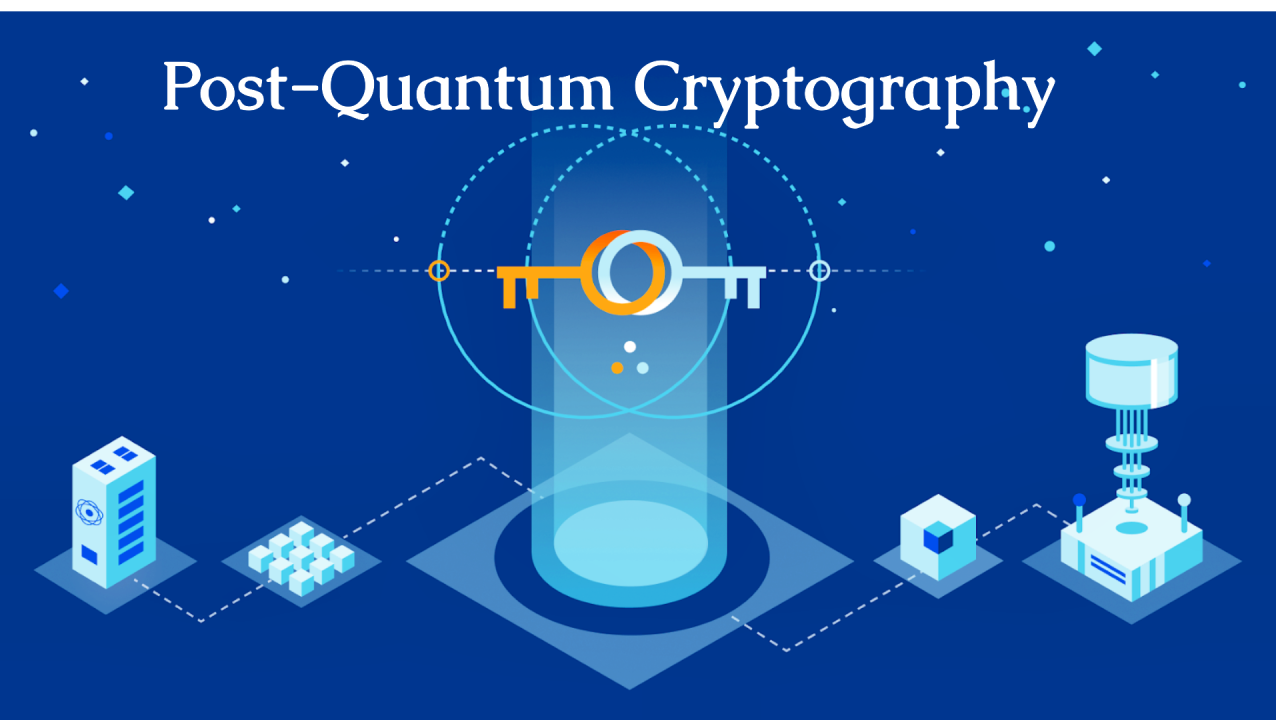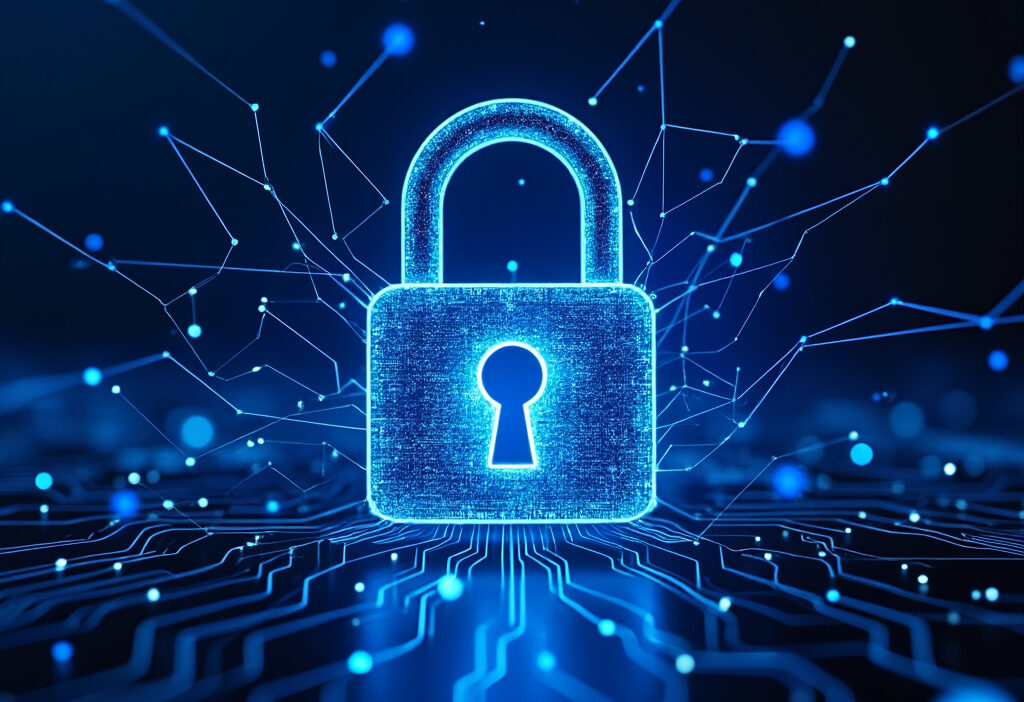Post-Quantum Cryptography Preparing for the Quantum Computing Era
As quantum computing advances, the cryptographic systems safeguarding our digital world face unprecedented threats. Post-quantum cryptography emerges as the solution, offering algorithms resistant to quantum attacks. This article explores the transition to quantum-safe cryptography, the challenges ahead, and the technologies leading the charge. Join us in understanding how to secure our digital future against the quantum computing era.
The Quantum Threat to Current Cryptography
Quantum computing represents a paradigm shift in computational power, and with it comes a profound threat to the cryptographic systems that underpin modern digital security. At the heart of this threat is Shor’s algorithm, a quantum algorithm capable of efficiently solving problems that are currently intractable for classical computers. Specifically, Shor’s algorithm can factor large integers and compute discrete logarithms—tasks that form the foundation of widely used public-key cryptosystems like RSA and ECC (Elliptic Curve Cryptography).
Traditional encryption methods rely on the computational difficulty of these mathematical problems to ensure security. For instance, RSA’s strength depends on the challenge of factoring large prime numbers, while ECC relies on the hardness of the elliptic curve discrete logarithm problem. However, a sufficiently powerful quantum computer running Shor’s algorithm could break these systems in polynomial time, rendering them obsolete. Current estimates suggest that a quantum computer with just a few thousand logical qubits could crack RSA-2048 in hours, a task that would take classical computers billions of years.
The implications are staggering. If quantum computers become practical, they could decrypt sensitive data protected by RSA or ECC, exposing everything from financial transactions to state secrets. Even encrypted communications intercepted today could be stored and decrypted later—a concept known as harvest now, decrypt later. This looming vulnerability underscores the urgency of transitioning to post-quantum cryptography, which aims to develop algorithms resistant to quantum attacks.
While symmetric-key cryptography (like AES) is less vulnerable—requiring only larger key sizes to maintain security—public-key infrastructure faces an existential crisis. The race is on to replace RSA and ECC with quantum-resistant alternatives before quantum computers mature. The next chapter explores these emerging solutions and the criteria they must meet to withstand the quantum era.
Understanding Post-Quantum Cryptography
Post-quantum cryptography (PQC) refers to cryptographic algorithms designed to withstand attacks from both classical and quantum computers. Unlike traditional cryptographic systems, which rely on mathematical problems vulnerable to quantum algorithms like Shor’s, PQC leverages problems believed to be resistant to quantum computational power. Its importance cannot be overstated—as quantum computers advance, the security of digital infrastructure, from financial transactions to government communications, hinges on the adoption of quantum-resistant solutions.
The criteria for quantum-resistant algorithms are rigorous. They must be based on mathematical problems that remain intractable even for quantum computers, such as lattice problems, multivariate equations, hash-based signatures, or code-based cryptography. Additionally, these algorithms must maintain efficiency in terms of computational overhead, key sizes, and operational speed to ensure practical deployment. The National Institute of Standards and Technology (NIST) has been leading the standardization effort, evaluating submissions through multiple rounds of public scrutiny to identify the most robust candidates.
Ongoing efforts to standardize PQC involve collaboration between academia, industry, and government agencies. NIST’s Post-Quantum Cryptography Standardization Project, initiated in 2016, has narrowed down several promising algorithms, including CRYSTALS-Kyber for key encapsulation and CRYSTALS-Dilithium for digital signatures. These selections prioritize security, performance, and adaptability to existing systems. However, transitioning to PQC is not just about algorithm selection—it requires careful planning to address backward compatibility, hybrid cryptographic systems, and potential vulnerabilities during migration.
As the quantum era looms, post-quantum cryptography represents a critical safeguard, ensuring that digital security evolves in lockstep with computational advancements. The next chapter will delve into lattice-based cryptography, one of the most promising approaches within PQC.
Lattice-Based Cryptography A Promising Approach
Lattice-based cryptography has emerged as one of the most promising approaches in the post-quantum cryptography landscape, offering robust security against both classical and quantum attacks. At its core, lattice-based cryptography relies on the hardness of certain mathematical problems involving lattices—geometric structures formed by repeating patterns of points in multidimensional space. The two most critical problems underpinning this approach are the Shortest Vector Problem (SVP) and the Learning With Errors (LWE) problem, both of which are believed to resist quantum algorithmic breakthroughs.
One of the key advantages of lattice-based cryptography is its versatility. It supports a wide range of cryptographic primitives, including encryption, digital signatures, and key exchange protocols. For instance, NTRU, one of the earliest lattice-based cryptosystems, provides efficient encryption and decryption processes while maintaining strong security guarantees. Another notable example is ring-LWE, a variant of LWE that operates over polynomial rings, offering improved efficiency without compromising security. These systems are particularly attractive due to their relatively small key sizes and fast computation times compared to other post-quantum candidates.
Beyond its resistance to quantum attacks, lattice-based cryptography also benefits from strong worst-case to average-case reductions. This means that breaking the cryptographic scheme in the average case would imply solving the underlying lattice problem in its worst-case scenario—a property that enhances confidence in its long-term security. As standardization efforts progress, lattice-based algorithms are leading contenders in initiatives like NIST’s Post-Quantum Cryptography Project, underscoring their potential to safeguard digital communications in the quantum era.
While challenges such as parameter selection and implementation optimizations remain, lattice-based cryptography stands out as a foundational pillar for the future of secure systems, bridging the gap between theoretical robustness and practical deployability.
Multivariate Cryptography and Its Potential
Multivariate cryptography is another promising candidate in the post-quantum cryptography landscape, relying on the computational difficulty of solving systems of multivariate polynomial equations. Unlike lattice-based cryptography, which leverages geometric structures, multivariate schemes are built on algebraic problems that remain hard even for quantum computers. The core idea involves mapping a set of variables through a series of nonlinear equations, where the complexity of inverting this mapping forms the basis of security.
One of the most notable multivariate schemes is the Rainbow signature scheme, an evolution of the earlier Unbalanced Oil and Vinegar (UOV) design. Rainbow improves upon UOV by introducing multiple layers of variables, enhancing security while maintaining efficiency. The scheme operates by constructing a system of quadratic equations where the private key allows efficient signing, while the public key—a set of seemingly random equations—makes forgery computationally infeasible. Rainbow’s resistance to quantum attacks stems from the fact that solving multivariate equations generally requires exponential time, even for quantum algorithms like Grover’s.
Despite its potential, multivariate cryptography faces challenges, including larger key sizes compared to lattice-based alternatives and susceptibility to certain algebraic attacks. However, ongoing research aims to optimize these schemes for practical use, particularly in applications requiring fast verification, such as digital signatures for IoT devices. As the quantum era approaches, multivariate cryptography, with its unique algebraic foundation, offers a viable complement to lattice-based and hash-based methods, ensuring a diversified defense against quantum threats.
Hash-Based Cryptography A Time-Tested Solution
Hash-based cryptography stands as one of the oldest and most reliable approaches to post-quantum security, leveraging the properties of cryptographic hash functions to create quantum-resistant schemes. Unlike multivariate cryptography, which relies on solving complex systems of equations, hash-based methods derive their security from the one-way nature of hash functions, making them inherently resistant to quantum attacks like Shor’s algorithm.
At the core of hash-based cryptography are one-time signatures, such as the Lamport signature scheme. This method uses pairs of secret random values as private keys, with their hashed versions serving as public keys. To sign a message, the sender reveals a subset of these private values, and the verifier checks their hashes against the public key. While efficient, Lamport signatures are limited by their one-time usability—each key pair can only sign a single message securely.
The Merkle signature scheme (MSS) addresses this limitation by organizing Lamport signatures into a Merkle tree structure. Here, the root of the tree becomes the public key, while individual leaves represent one-time key pairs. This hierarchical approach allows for multiple signatures under a single public key, improving scalability. MSS remains quantum-resistant because forging a signature would require breaking the underlying hash function’s preimage resistance, a task even quantum computers struggle with.
Hash-based cryptography’s simplicity and reliance on well-understood hash functions make it a compelling choice for post-quantum security. However, its larger key sizes and stateful nature—requiring careful management of used keys—pose practical challenges. As we transition to code-based cryptography in the next chapter, these trade-offs highlight the need for diverse solutions in the quantum era.
Code-Based Cryptography An Alternative Path
Code-based cryptography represents one of the oldest and most mathematically robust approaches to post-quantum security, with the McEliece cryptosystem standing as its flagship example. Introduced in 1978, McEliece relies on the hardness of decoding random linear codes—a problem that remains intractable even for quantum computers. Unlike hash-based cryptography, which excels in digital signatures, McEliece is primarily a public-key encryption system, offering a distinct alternative to lattice-based or multivariate schemes.
At its core, the McEliece cryptosystem uses Goppa codes, a class of error-correcting codes, to mask the plaintext. The security stems from the fact that decoding a random linear code without knowledge of the underlying structure is computationally infeasible, even with quantum algorithms like Shor’s. This makes McEliece one of the few systems with a provable security reduction to a well-studied problem in coding theory.
However, practical adoption has been hindered by two major challenges: key size and computational overhead. Traditional McEliece implementations require public keys in the range of hundreds of kilobytes to several megabytes, far larger than RSA or ECC keys. Additionally, encryption and decryption operations involve complex matrix manipulations, leading to slower performance compared to classical systems. Recent variants, like Niederreiter and Quasi-Cyclic McEliece, aim to mitigate these issues by optimizing code structures, but trade-offs between efficiency and security persist.
Despite these hurdles, code-based cryptography remains a compelling candidate for post-quantum standardization. Its resistance to quantum attacks, combined with decades of cryptanalysis, positions it as a viable alternative—especially in scenarios where key size is less critical than long-term security. As the quantum era approaches, refining these systems for real-world use will be essential to ensuring robust digital infrastructure.
The Role of Symmetric Cryptography in a Quantum World
Symmetric cryptography has long been the backbone of secure communications, offering efficiency and robustness in encryption. Unlike asymmetric systems, which rely on mathematical problems vulnerable to quantum attacks, symmetric cryptography—based on shared keys—remains relatively resilient in a quantum world. However, it is not entirely immune. Grover’s algorithm, a quantum search algorithm, poses the most significant threat by effectively halving the security strength of symmetric key schemes. For example, a 128-bit key, which would require 2128 operations to brute-force classically, could be compromised in roughly 264 operations using Grover’s algorithm.
The solution lies in increasing key sizes. AES-256, for instance, remains secure against quantum attacks because Grover’s algorithm would still require 2128 operations—a computationally infeasible task even for foreseeable quantum computers. This underscores the importance of adopting longer keys in symmetric systems to maintain security post-quantum. While Grover’s algorithm is a concern, it is far less disruptive than Shor’s algorithm, which breaks widely used asymmetric cryptosystems like RSA and ECC.
Symmetric cryptography also plays a critical role in hybrid systems, where it complements post-quantum asymmetric algorithms. For example, in protocols like TLS, symmetric encryption handles bulk data protection, while post-quantum key exchange mechanisms secure the initial handshake. This layered approach ensures efficiency without compromising security.
Despite its resilience, symmetric cryptography alone cannot address all post-quantum challenges. Key distribution remains a hurdle, as symmetric systems require secure pre-shared keys or rely on asymmetric encryption for key exchange—a vulnerability if the latter is quantum-broken. Thus, while symmetric cryptography will remain indispensable, its role must be carefully integrated within broader post-quantum frameworks, as highlighted by NIST’s ongoing standardization efforts.
NIST’s Post-Quantum Cryptography Standardization
NIST’s Post-Quantum Cryptography Standardization initiative represents a critical step in safeguarding digital security as quantum computing advances. Recognizing the threat posed by Shor’s and Grover’s algorithms, NIST launched a multi-year project in 2016 to evaluate and standardize quantum-resistant cryptographic algorithms. The goal was to identify replacements for vulnerable public-key systems like RSA and ECC, which underpin much of today’s secure communications.
The process involved rigorous analysis of submissions from global researchers, assessing security, performance, and practicality. In 2022, NIST announced its first set of standardized algorithms. CRYSTALS-Kyber was selected for general encryption, while CRYSTALS-Dilithium, FALCON, and SPHINCS+ were chosen for digital signatures. Kyber and Dilithium, both lattice-based, stood out for their efficiency and strong security guarantees. FALCON, another lattice-based scheme, is optimized for smaller signatures, whereas SPHINCS+, a hash-based algorithm, provides a conservative fallback option resistant to quantum attacks.
NIST’s timeline outlines a phased adoption strategy, with draft standards expected by 2024 and finalization shortly after. The transition will require careful implementation to avoid disruptions, as highlighted in the following chapter. While symmetric cryptography remains relatively secure with increased key sizes, as discussed earlier, NIST’s focus on post-quantum public-key solutions ensures a holistic defense against quantum threats. The standardization effort also includes ongoing evaluation of additional candidates like BIKE and Classic McEliece for niche use cases, ensuring flexibility in deployment.
This initiative underscores the urgency of preparing for quantum resilience, bridging the gap between theoretical research and real-world security needs. The selected algorithms will form the backbone of future cryptographic infrastructures, demanding collaboration across industries to achieve seamless integration.
Challenges in Transitioning to Post-Quantum Cryptography
Transitioning to post-quantum cryptography (PQC) presents a complex set of challenges that organizations must navigate carefully. One of the primary hurdles is compatibility with existing systems. Many legacy infrastructures rely on classical cryptographic algorithms like RSA and ECC, which are deeply embedded in protocols, hardware, and software. Retrofitting these systems with quantum-resistant alternatives requires significant architectural changes, often leading to interoperability issues. For example, PQC algorithms like lattice-based or hash-based cryptography may demand larger key sizes or different computational approaches, disrupting established workflows.
Another critical concern is performance. Quantum-resistant algorithms often introduce higher computational overhead. Lattice-based cryptography, while secure, can be slower than traditional methods, impacting latency-sensitive applications such as real-time communications or IoT devices. Organizations must balance security with efficiency, potentially requiring hardware upgrades or optimized implementations to mitigate performance degradation.
Widespread adoption is equally challenging. The transition hinges on global consensus and coordinated efforts across industries, governments, and standards bodies. Without uniform adoption, systems risk vulnerabilities at points where quantum-resistant and classical cryptography intersect. Additionally, educating stakeholders—from developers to executives—about the urgency and technical nuances of PQC is essential to drive timely action.
Finally, the timeline for migration is tight. With quantum computing advancing rapidly, organizations cannot afford delays. Yet, rushed implementations risk introducing flaws. A phased approach, prioritizing critical systems first, may help manage risks while ensuring a smoother transition. These challenges underscore the need for proactive planning, as explored in the next chapter on preparing for the quantum future.
Preparing for the Quantum Future
As quantum computing advances, organizations must proactively prepare for the post-quantum era to safeguard their digital assets. The transition to quantum-resistant cryptography is not just a technical challenge but a strategic imperative. Early adoption is critical—delaying could leave systems vulnerable to harvest now, decrypt later attacks, where adversaries collect encrypted data today to decrypt it once quantum computers become viable.
A key strategy is cryptographic agility, ensuring systems can seamlessly integrate new algorithms as standards evolve. Organizations should audit their cryptographic dependencies, identifying where classical algorithms like RSA and ECC are used, and prioritize high-risk areas such as financial transactions, identity management, and critical infrastructure.
Collaboration is equally vital. Engaging with industry consortia, government initiatives like NIST’s Post-Quantum Cryptography Standardization project, and open-source communities accelerates knowledge sharing and reduces implementation risks. Smaller enterprises can leverage partnerships with cybersecurity vendors offering hybrid solutions that combine classical and post-quantum algorithms during the transition.
Workforce readiness is another pillar. IT teams must be trained in quantum threats and mitigation strategies, while leadership should allocate budgets for long-term cryptographic upgrades. Pilot projects can test post-quantum solutions in non-critical systems, refining deployment strategies before full-scale migration.
Finally, organizations should monitor the quantum landscape closely, staying informed about breakthroughs in both quantum computing and countermeasures. By embracing these strategies—early action, agility, collaboration, and education—businesses can navigate the quantum future with resilience, ensuring their security frameworks remain robust in an era of unprecedented computational power.

Conclusions
The advent of quantum computing necessitates a paradigm shift in cryptographic practices. Post-quantum cryptography stands as the bulwark against future threats, ensuring the security of our digital ecosystem. By understanding and adopting quantum-resistant algorithms today, we can safeguard our data for tomorrow. The journey to quantum-safe cryptography is complex but essential for a secure digital future.



